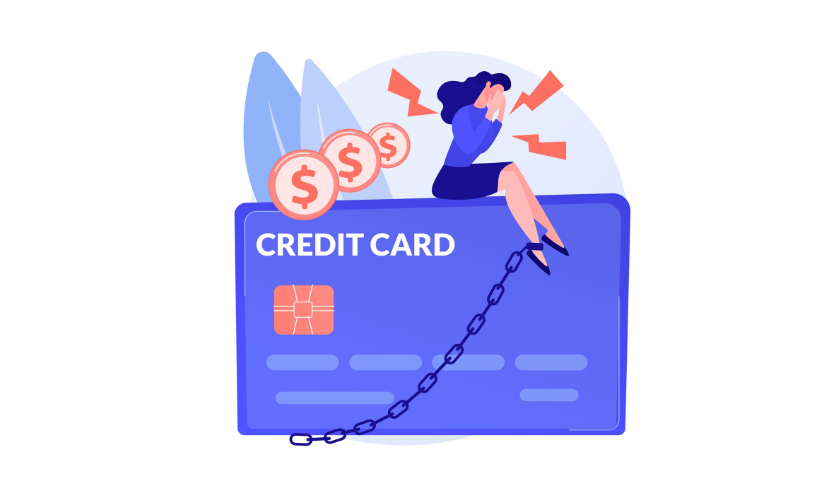Credit card companies make borrowing look so easy and harmless with their tempting offers and low minimum payments. Yet behind their alluring offers lies a complex web of fees, interest traps, and long-term consequences.
In this blog, we will unveil the hidden truths about debt relief, empowering you to make informed, financially sound decisions.
The Slow Erosion of Repayment Power:
The minimum payments are often marked as convenience fees, but these credit card companies often mask a cruel truth. Paying a minimum amount due will keep your account current, but most of this payment goes towards interest charges. That means your principal amount in the bank account decreases slowly, interest compounds, and total cost boosts quickly. This way, credit card companies make a lot of profit from your long-term minimum interest payments.
Know About Fees And Interest:
Even if you get into a hardship program, the extra charges like fees and interest may still keep adding up. Hence, causing your debt to grow.
1. Credit card companies often charge late fees or returned payment fees that they might reinstate after the payment of your hardship.
2. Companies might charge you with continued interest accrual, often a higher “penalty”. If they feel your account is too risky.
3. Re-aging your account. When a lender removes a default mark from your account temporarily, but later reapplies missed payments to the balance.
These undisclosed items can prolong your debt and will subsequently increase the amount you ultimately pay.
What Debt Relief Companies Don’t Always Advertise?
There’s a huge industry of companies that provide debt settlement, consolidation, and management plans. You may have met with some of them. However, here are some things that are often not discussed in the sales pitches.
1. The enrollment and monthly service fees charged by companies gradually reduce the amount available to pay creditors.
2. Salespeople earn extra pay or a bonus based on how much they sell. Which in turn can encourage them to push unsuitable products to their clients.
3. The probability that creditors will reject their debt settlement offer. Especially when the debt has not been charged off.
4. Your harassment by debtors doesn’t automatically stop once you sign with a company. Only when you get a court order, your bankruptcy, or a direct agreement from your creditor does that.
The Credit Score And Credit Report Consequences:
Debt relief might sound like a shortcut but it can cost you heavy credit score points and years of clean credit history.
1. Settling for “less than full balance” is typically recorded and reported as “settled” or “paid settled”. Which can hurt your credit score really hard, more than paying in full.
2. The debt plans by several companies that require you to close your account or stop using credit cards are quite dangerous. They might reduce your available credit, shorten your credit history, ultimately lowering your credit score.
3. Having a short-term improvement in debt payment status might turn into long-term damage. Especially when your accounts show a settled for less, charged-off, or included in a public bankruptcy record.
Tax and Legal Surprises:
Most people are unaware that their forgiven debt can be taxable in some jurisdictions. For instance, in the United States, creditors issue a Form 1099‑C for cancelled debt. Which the IRS treats as income unless an exception applies.
1. If you only propose a settlement to a debt buyer, you are not finalizing or completing it. They can still drag you to the courtroom and get a legal judgment against you for the debt.
2. These statutes of limitation for suing you in court are different in every state. And can be restarted by certain actions, like paying part of what you owe or admitting in writing that you owe, can reset that time limit.
Consignors, Secured Debt, and Collateral:
Credit card debts are generally unsecured, but the real deal arises when cosigners or secured loans are also involved. Having a settlement or relief plan that solely focuses on the primary debtor doesn’t erase liability for the cosigner. And the creditor may pursue collateral held against other debts.
Bankruptcy: The Blunt Instrument Many Avoid:
Bankruptcy is often seen as a stigma. However, it is genuinely a very good legal protection and can discharge all your debts. But it is not the right choice for everyone. Bankruptcy affects your credit score to the core and remains on your record for years, which makes it difficult to get a loan later. Still, many people with overwhelming unsecured balances and only a little repayment ability, going bankrupt is a good option.
How To Evaluate Debt Relief Offers?
Before you pick a pen for signing any document, ask for clear, written answers to these questions:
1. What are the exact total fees, and how will they be collected?
2. Will the payments be going to creditors directly or to the credit company first?
3. What will be reported to credit bureaus and how?
4. What are the potential tax consequences of any forgiven amounts?
5. Is the credit company licensed in your state, or where required, and what is its complaint history?
6. Get a clear timeline: how long before creditors are contacted, and what milestones must be met?
Conclusion:
Debt relief is helpful, but it is not a magic wand. Many credit card companies and debt relief firms hide important information about fees, risks, and long-term consequences. To lure you into buying their plans. So, make sure you check on every detail in writing, and explore nonprofit or direct solutions before committing. Making informed decisions protects your finances and future credit health.
